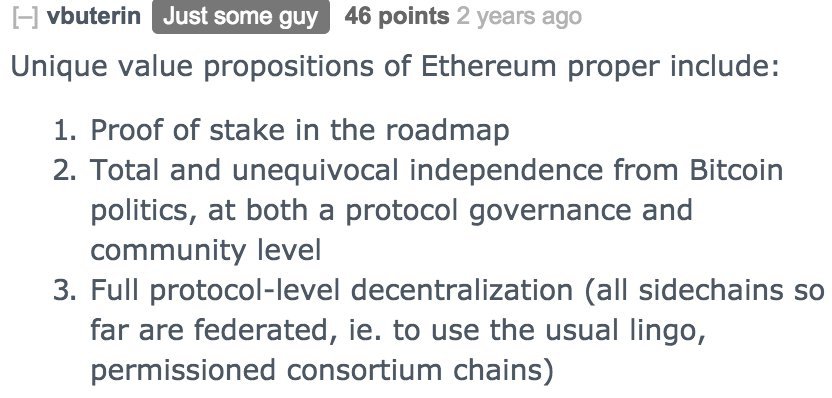/latest/2018/12/crypto-analyst-tuur-demeester-launches-devastating-attack-on-ethereum-eth/
On Friday (28 December 2018), crypto analyst Tuur Demeester, Editor-in-Chief of Adamant Research and Founder of Bitcoin alpha fund Adamant Capital, took to Twitter to launch a devastating attack on Ethereum (ETH), in which he laid out the case against Ethereum, closing his argument by calling it the “Yahoo of our day” (i.e. “an unscalable ‘blue chip’ cryptocurrency”).
Tuur started his amazing tweetstorm with the following tweet:
1/ People often ask me why I’m so “against” Ethereum. Why do I go out of my way to point out flaws or make analogies that put it in a bad light?
— Tuur Demeester (@TuurDemeester) December 28, 2018
The next tweet explained why he feels that he needs to point out Ethereum’s flaws:
2/ First, ETH’s architecture & culture is _opposite_ that of Bitcoin, and yet claims to offer same solutions: decentralization, immutability, SoV, asset issuance, smart contracts, …
Second, ETH is considered a crypto ‘blue chip’, thus colors perception of uninformed newcomers.
— Tuur Demeester (@TuurDemeester) December 28, 2018
If you’d like to read Tuur’s tweetstorm in its entirety in an “article” format, you can use Thread Reader.
What we are going to in this article is to focus on some of the more interesting points raised in Tuur’s argument.
Ethereum Is Not Scalable
- “I agree with Ethereum developer Vlad Zamfir that it’s not money, not safe, and not scalable.” Here are two tweets by blockchain researcher Vlad Zamfir (who works at the Ethereum Foundation and is the lead developer of the Casper protocol upgrade) that Tuur relies on to backup this statement:
Ethereum isn’t safe or scalable. It is immature experimental tech. Don’t rely on it for mission critical apps unless absolutely necessary!
— Vlad Zamfir (@VladZamfir) March 4, 2017
Eth isn’t money, so there is no monetary policy. There is currently fixed block issuance with an exponential difficulty increase (the bomb).
— Vlad Zamfir (@VladZamfir) May 1, 2017
- “Despite strong optimism that on-chain scaling of Ethereum was around the corner” (with Ethereum’s founders talking about sharding as far back as June 2014), “this promise hasn’t been delivered on to date.”
- “Recently, a team of reputable developers decided to peer review a widely anticipated Casper / sharding white paper, concluding that it does not live up to its own claims.”
Unmerciful peer review of Vlad Zamfir & co’s white paper to scale Ethereum: “the authors do NOT prove that the CBC Casper family of protocols is Byzantine fault tolerant in either practice or theory”. pic.twitter.com/bPPtoYWZ3N
— Tuur Demeester (@TuurDemeester) December 6, 2018
- “On the 2nd layer front, devs are now trying to scale Ethereum via scale via state channels (ETH’s version of Lightning), but it is unclear whether main-chain issued ERC20 type tokens will be portable to this environment.”
- “In 2017, more Ethereum scaling buzz was created, this time the panacea was ‘Plasma’.”
- “However, upon closer examination it was the recycling of some stale ideas, and the project went nowhere:”
These ideas were all considered in the Treechains design process, and ultimately rejected as insecure.
— Peter Todd (@peterktodd) August 10, 2017
- “By putting ‘everything on the blockchain’ (which stores everything forever) and dubbing it ‘the world computer’, you are going to end up with a very slow and clogged up system.”
- “By now the Ethereum bloat is so bad that cheaply running an individual node is practically impossible for a lay person. ETH developers are also imploring people to not deploy more smart contract apps on its blockchain.”
But… deploying d-apps on the “Ethereum Virtual Machine” is exactly what everyone was encouraged to do for the past 4 years. Looks like on-chain scaling wasn’t such a great idea after all. pic.twitter.com/191znXfJE7
— Tuur Demeester (@TuurDemeester) September 21, 2018
The Transition From ‘Proof-of-Work’ (PoW) to ‘Proof-of-Stake’ (PoS)
- “The elephant in the room is the transition to proof-of-stake, an “environmentally friendly” way to secure the chain. (If this was the plan all along, why create a proof-of-work chain first?)”
- Hugo Nguyen’s Medium post “highlights some of the fundamental design problems of proof-of-stake.”
Ethereum’s Value Proposition Is Utopian
- What Tuur is referring to is a post Vitalik Buterin made on Reddit two years ago, in which he identified the “unique value propositions of Ethereum proper”

- And this is the tweet Tuur sent out a few days ago, which compared “Ethereum-ism” to Marxism:
Ethereum-ism sounds a bit like Marxism to me:
– What works today (PoW) is ‘just a phase’, the ideal & unproven future is to come: Proof-of-Stake.
– Utopian concept of progress: ‘social consensus’ based hard forks.
– Utopian future: perpetual income for all ‘ETHizens’.
— Tuur Demeester (@TuurDemeester) December 25, 2018
Ethereum Is Becoming Increasingly Centralized
Afri Schoedon, release manager for the Parity Ethereum, sent out this tweet about Infura (which is operated by ConsenSys) in October 2018:
if we don’t stop relying on infura, the vision of ethereum failed
— Afri 🌩️ (@5chdn) October 26, 2018
Ethereum Is Not Censorship-Resistant
Tuur says that despite the claim back in 2016 that the “Ethereum World Computer” was “uncensorable”, “later that year, after only 6% of ETH holders had cast a vote, ETH core devs decided to endorse a hard-fork that clawed back the funds from a smart contract that held 4.5% of all ETH in circulation.”
Ethereum ICO
- “Here’s why Ethereum is dubious to me: rather than creating an open source project & testnet to work on these interesting computer science problems, its founders instead did a securities offering, involving many thousands of clueless retail investors.”
- “Investing in the Ethereum ICO was akin to buying shares in a startup that had ‘invent time travel’ as part of its business plan. Imo it was a reckless security offering, and it set the tone for the terrible capital misallocation of the 2017 ICO boom.”
Featured Image Credit: Photo via Pexels.com







